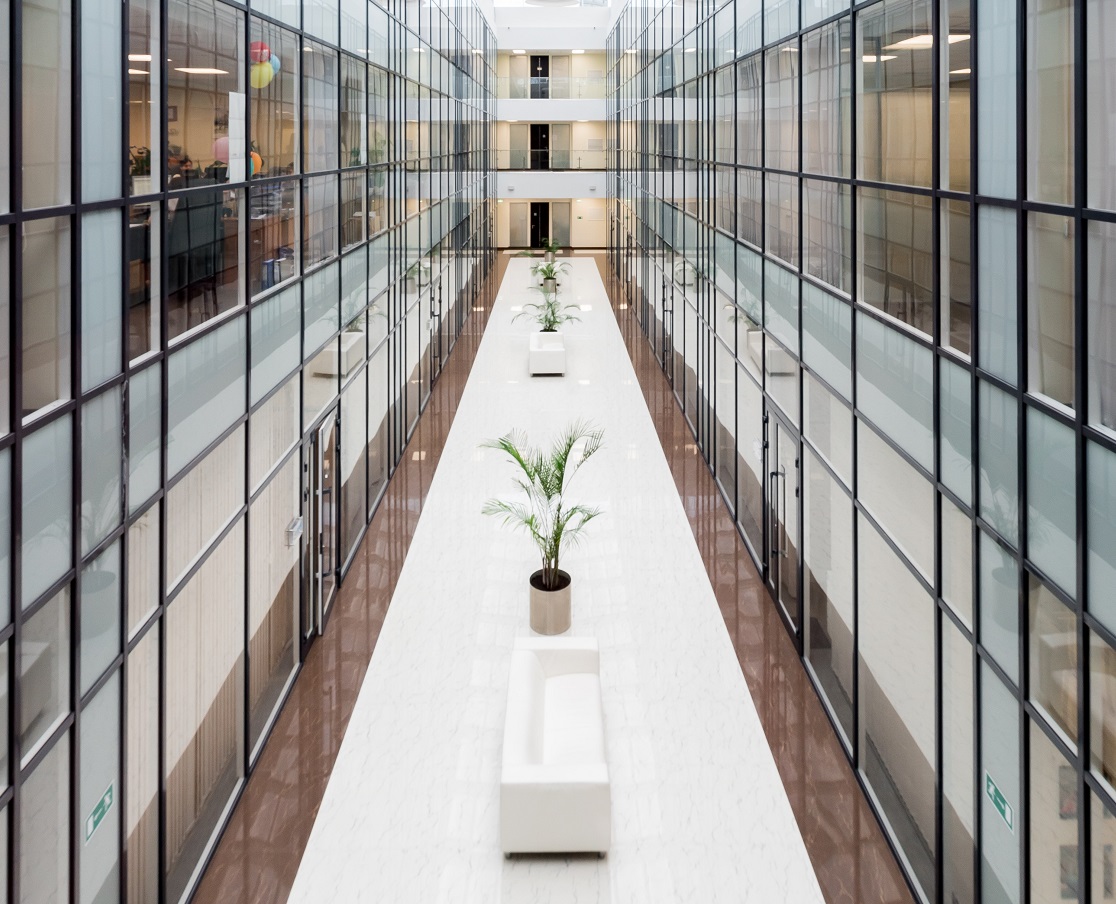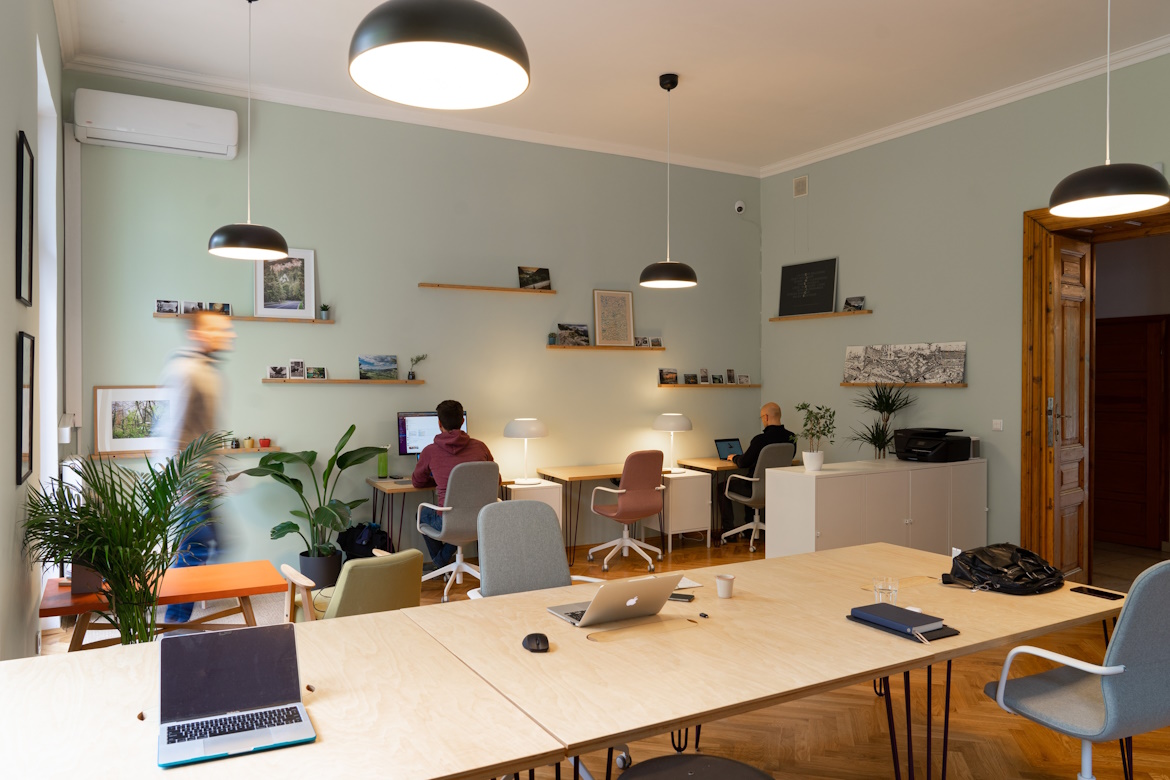The Ultimate Guide to Renting Serviced Offices
When considering a flexible workspace solution, a serviced office can be the perfect fit. They offer access to a private office and shared amenities, whilst all-inclusive payments make managing cash flow easy.
This is our ultimate guide to renting serviced offices. We’ll run through everything you need to know about serviced offices, from what’s included to how to find the perfect space.
What Makes an Office a ‘Serviced Office’?
A serviced office is a type of commercial property that is rented out to desk-based organisations. Multiple companies share the building, each with their own private office or coworking desks.
The amenities within the building – like the kitchen, breakout space, meeting rooms and meditation rooms – are shared. Serviced offices are fully furnished and come with Wi-Fi, making it easy to hit the ground running as soon as you move in.

The History of Serviced Offices
As a matter of fact, serviced offices have been around for decades.
But they’ve really started to gain the attention of business owners over the last 10 years – even more so recently. When serviced offices started, they were mainly used by startups and small businesses that wanted to rent office space at a low cost with minimal risk.
Serviced offices are the domain of all sorts of business types, from SMEs to larger established businesses. The first-class amenities and flexible contractual terms are really appealing to organisations from a variety of sectors because they facilitate financial agility.
FreeOfficeFinder’s has found through our own research that the number of serviced office buildings in the UK has risen by 70% since 2000.
They can be a great choice for anyone who wants to establish themselves in a prime location without committing to a long lease. Of course, serviced offices are not for everyone, which is why it’s important to understand the disadvantages as well as the advantages. In some cases, a flexible lease might be suitable.
Serviced Office Advantages
• A quick and flexible way to get up and running quickly.
• Fully furnished.
• Lots of amenities in the building.
• Situated in prime locations.
• Low-cost/low-risk way to test a location.
• All-inclusive billing (meeting room usage may be charged separately).
• Can help to attract and retain talent.
• Networking opportunities.
Serviced Office Disadvantages
• May be limited in length of term (if you need 5+ years agreement etc).
• May be limited in terms of amount of space available in the building.
• Not as much “ownership”. Branding in corridors and reception is usually not possible.
• Inability to make changes to the fit-out or design.
Who Are the Larger Serviced Office Providers?
A serviced office provider – or operator – is a company that runs serviced offices. There are some huge global providers as well as smaller, independent serviced office businesses. Regus is one of the most significant flexible workspace providers. It’s part of IWG, who also own the serviced office brands Spaces and No18. There are more than 3,000 IWG locations in over 120 countries.
WeWork is another major player in the field of serviced offices. Founded in 2010, WeWork is a brand that provides flexible workspaces to businesses of all shapes and sizes. It operates more than 700 locations in over 30 countries.
Are Serviced Offices for Everyone?
Serviced offices have a very wide appeal. They provide startups and small businesses with a low-cost way to get going quickly, with room to grow as their workforce expands.
SMEs may find it easier to attract and retain talent in a serviced office with good amenities that employees can use. There’s the social aspect too as many serviced offices run networking and social events as a way of getting occupiers to meet and potentially collaborate. Large multinational companies also use serviced offices as satellite locations for their teams.

How are Serviced Offices Priced?
Serviced offices are usually priced on a desk-by-desk or square foot basis. A 5-person office in Covent Garden, for instance, could cost in the region of £3,500. You can use FreeOfficeFinder’s pricing tool to work out how much an office might cost in your location.
The price of a serviced office hinges on several factors, including the area in which it resides and the amenities on offer. Quality will also play a role; Grade A offices that have been designed to a high specification are more expensive than older, Grade C offices.
The cost of a serviced office usually includes things like electricity and internet, but not always. Ask your serviced office broker to see if these elements are included in the price, or check your rental agreement if you’ve already moved in. Meeting room usage is also sometimes charged on top, so it’s worth finding this out before you move.
What Came First: Serviced Offices or Coworking?
Serviced offices arrived first, with coworking evolving out of this model. The first known coworking space, called C-Base, was founded in Berlin in 1995 as a place where coders could meet and collaborate. Since then, the coworking concept has spread worldwide.
Coworking spaces feature open plan, collaborative work environments. Desks are often more affordable, which is why coworking is so popular with freelancers and startups. Like serviced offices, they also feature meeting rooms, breakout spaces and other amenities.

Whether you’re looking for coworking desks in a laid-back environment or a serviced office with a more corporate appeal, there’s a flexible office solution out there for everyone.